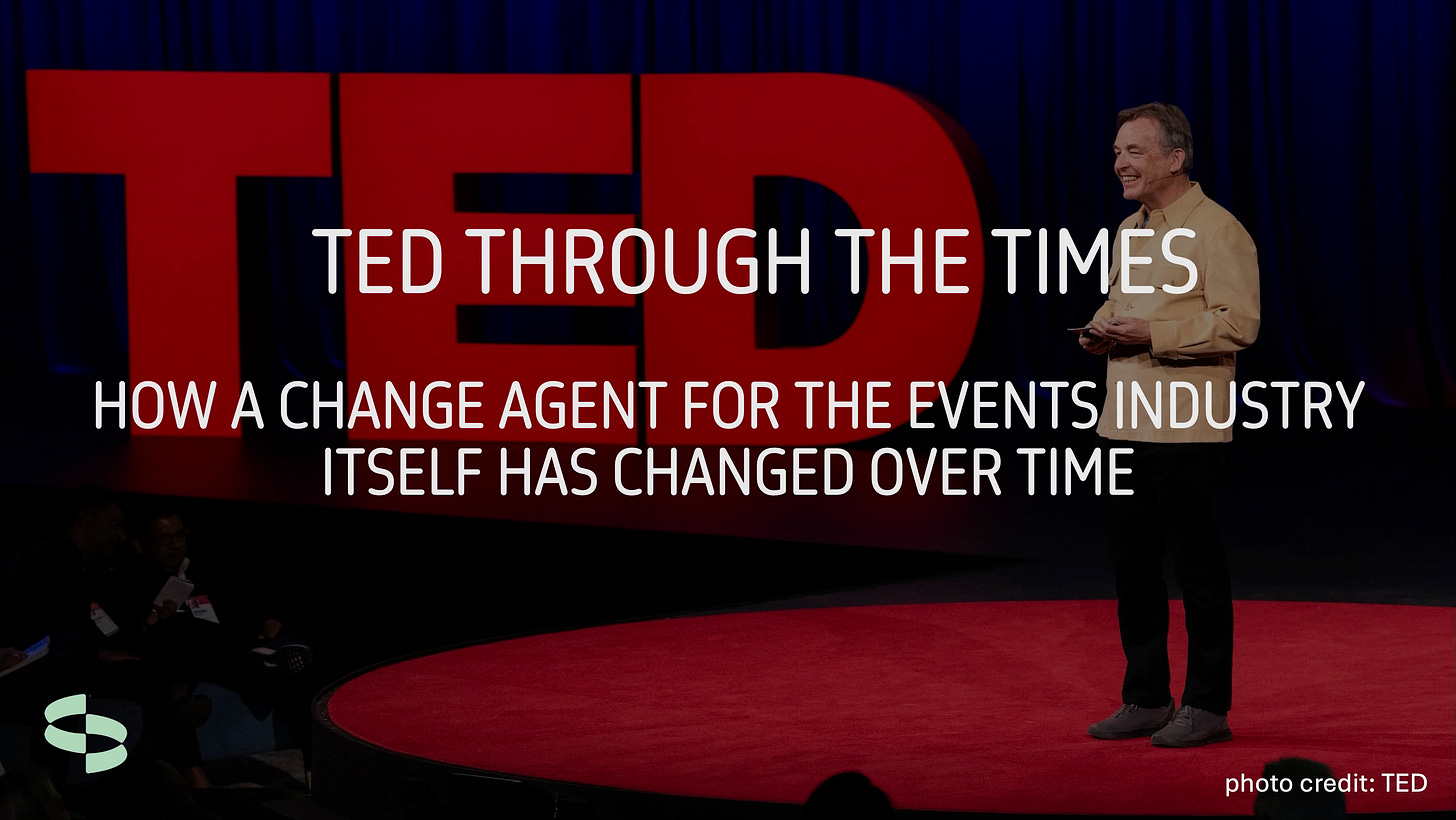When Chris Anderson unveiled plans on Feb. 4, 2025 to “give TED away,” he did so on stage in New York as well as through a public TED Blog post and a same-day WIRED interview. It was an open call inviting universities, philanthropies or collectives to propose how they might steward the nonprofit’s next chapter. Anderson said he would take no financial gain and insisted that TED’s core commitments be preserved: free access, nonpartisanship and global reach.
The announcement marked a rare act of introspection for an organisation that has spent four decades distilling big ideas into disciplined, 18-minute bursts. The question now facing TED: can it evolve into a more distributed, community-led network without losing the precision that made it iconic?
As Anderson announced Sal Khan, founder of the Khan Academy, as the future “Vision Steward” of TED, here is a look at the history of both the event and the TED ecosystem.
From West-Coast Experiment to Global Platform
TED, short for Technology, Entertainment, Design, began in 1984 in Monterey, California, as an experiment by architect Richard Saul Wurman and designer Harry Marks. The inaugural event showcased the Apple Macintosh, compact discs and mathematician Benoît Mandelbrot’s fractals. The debut lost money and disappeared again, but by 1990 the conference returned as an annual invitation-only gathering for the creative elite.
In 2001, publisher-turned-philanthropist Chris Anderson acquired TED through his nonprofit Sapling Foundation. Under his direction, the brand expanded beyond tech and design into science, global issues and culture. The decision in 2006 to post TED Talks free online transformed a boutique event into a global media engine. Within five years and fired by the early growth of the content-hungry internet, the videos drew over half a billion views, seeding an ecosystem that now spans thousands of independently organized TEDx events.
“Ideas Worth Spreading” — and the Cost of Exclusivity
TED has long drawn criticism for preaching openness while operating as an exclusive circle. Standard passes cost about $12,500, and attendance remains application-based, reinforcing hierarchies that critics say the brand claims to transcend. TechCrunch once described the main event as “elitism with better staging,” while a 2012 TEDxHarlem dispute centered on whether organizers favored sponsors over local voices.
After decades in California (Monterey, then Long Beach), TED announced in 2013 that its flagship conference would relocate to Vancouver, Canada, beginning in 2014. To preserve intimacy inside a convention hall, organisers commissioned a custom 1,200-seat modular theatre, built annually inside the Vancouver Convention Centre.
Vancouver has hosted TED ever since. But TED 2026, scheduled for April 13–17, will be “the final Vancouver edition” before the conference is scheduled to return to California in 2027.
Scholars have also questioned TED’s curation. One Berkeley academic wrote, “It’s not just what TED spreads, it’s what it leaves out,” calling the brand “a gatekeeper dressed as a liberator.” Defenders counter that the vast TEDx network, now numbering in the thousands, has opened doors to new regions and voices, turning a once-elite salon into a distributed knowledge web.
The Trouble With the Perfect Talk
TED’s defining 18-minute talk, a model born to prevent rambling, has become both signature and constraint. Over time, its polished delivery, emotional pacing and familiar narrative arc turned formulaic. The Guardian derided the result as “predictable, false and embarrassing,” comparing speakers to “TED-bots.” New Statesman accused the format of flattening complexity into “feel-good soundbites,” while others have likened the conferences to “megachurch infotainment for the global creative class.”
Acknowledging fatigue, TED has responded and begun experimenting with new forms: fireside conversations, interactive visuals, co-presented talks and multimedia storytelling. Academic studies note that the genre has evolved, blending data, narrative and performance, as organisers test ways to keep the stage relevant for audiences raised on short-form video and social feeds.
Reinvention Underway
In 2019, TED Conferences LLC transferred from the Sapling Foundation to the newly formed TED Foundation, clarifying its nonprofit governance and donor structure. The brand today spans the annual flagship event, TEDWomen, TEDGlobal, TED-Ed and the philanthropic Audacious Project. The pandemic also left a lasting dent in the foundation’s finances, “shooting down our main source of revenue for a year”, Anderson stated, forcing adaptation.
Now, with Anderson and CEO Jay Harratti stepping back, TED faces a defining choice: how to reinvent itself without losing coherence. The curation that built its credibility may also constrain its future.
Anderson calls his plan “radical transparency in leadership succession.” Rather than naming a successor, he has invited the world to propose one. “Whoever comes next should think bigger than one person’s vision,” he told WIRED. “TED’s mission belongs to the world.”



